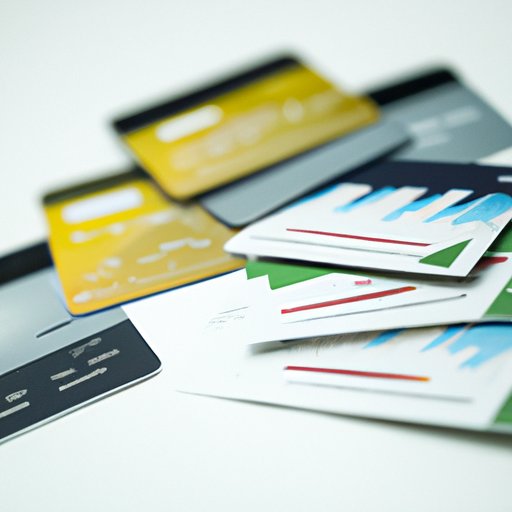
I. Introduction
For any business, having a strong credit profile is essential to secure financing and grow. This is especially true for LLCs, as it helps to separate personal and business finances. In this article, we will provide a step-by-step guide on how to establish business credit for an LLC.
II. The Process of Registering for an EIN
An Employer Identification Number (EIN), also known as a tax ID number, is a unique nine-digit number assigned to businesses by the IRS. Obtaining an EIN is crucial for establishing business credit since most lenders require it. The application process is straightforward:
- Visit the IRS website and fill out the online application.
- Provide basic information about your business, such as the name, location, and type.
- Within minutes, you will receive your EIN. Keep it safe, as you will need it for future applications.
It is essential to ensure that all information provided is accurate to avoid delays with the application process.
III. Building Business Credit through Trade Lines
Trade lines are credit accounts that report to business credit bureaus. They are essential for building business credit since they demonstrate a history of responsible borrowing. Vendors and suppliers are ideal sources for establishing trade lines. Here are steps to follow:
- Select a vendor or supplier that reports to business credit bureaus.
- Make timely payments to the vendor or supplier.
- After several months of on-time payments, apply for additional trade lines with other vendors or suppliers to further establish credit.
As a rule, it is critical to only select vendors and suppliers with whom you plan on conducting business regularly since applying for trade lines with too many providers can negatively impact your credit score.
IV. Obtaining Business Credit Cards
Business credit cards are an excellent way to establish business credit. They offer an easy way to track expenses, earn rewards, and demonstrate a history of responsible borrowing. However, it is crucial to ensure responsible use as misuse can negatively impact credit scores. Here are steps to follow:
- Research and compare credit card offers to select a card that offers favorable terms and rewards.
- Gather all necessary documentation, including the business EIN, bank statements, and tax returns.
- Apply for the card and wait for approval.
It is essential to ensure that you use the credit card responsibly, such as making timely payments and keeping balances low, to avoid negative impacts on credit scores.
V. Credit Monitoring
Monitoring business credit is crucial to ensure that everything is accurate and there are no fraudulent activities. Here are steps to follow:
- Obtain a credit report from one or more credit bureaus, such as Experian, Equifax, and Dun & Bradstreet.
- Analyze your credit report and ensure that everything is accurate.
- If you find errors or negative marks, contact the credit bureau to correct them or remove them appropriately.
Regularly monitoring credit reports ensures that any issues or errors are dealt with promptly, allowing you to maintain a good credit score.
VI. Building Relationships with Lenders
Establishing a relationship with a lender is essential to ensure you have access to credit when needed. Here are steps to follow:
- Research and compare lenders, considering factors such as interest rates, fees, and borrowing terms.
- Apply for credit and wait for approval.
- Maintain a positive relationship with the lender by consistently making payments on time and keeping communication lines open.
Having a good relationship with a lender can lead to more favorable borrowing terms, such as interest rates and repayment periods.
VII. Business Loans
Business loans are an alternative to trade lines and credit cards for establishing business credit. There are various types of loans available, each of which has its own benefits and drawbacks. The most common types are:
- Short-term loans
- Small Business Administration (SBA) loans
- Lines of credit
Choosing the right loan for your business’s needs is crucial to ensure successful repayment and maintain a positive credit profile.
VIII. Maintaining a Positive Cash Flow
A positive cash flow is essential for a successful business and plays a critical role in establishing business credit. It demonstrates to lenders and other creditors that your business can manage finances effectively. Here are tips for maintaining a good cash flow:
- Create a budget and stick to it.
- Forecast your cash flow regularly to anticipate any potential shortfalls.
- Increase revenue by actively seeking new customers and marketing your business.
If your cash flow becomes negative, you can take various steps to improve it, such as negotiating with vendors and suppliers or securing business loans.
IX. Conclusion
In conclusion, establishing business credit for LLCs takes time and effort, but it is crucial to ensure a firm financial footing and secure future financing. Following the steps outlined in this guide will help your business achieve that strong credit profile.
Now that you have a comprehensive guide on how to establish business credit for LLCs, it’s time to begin the process.




